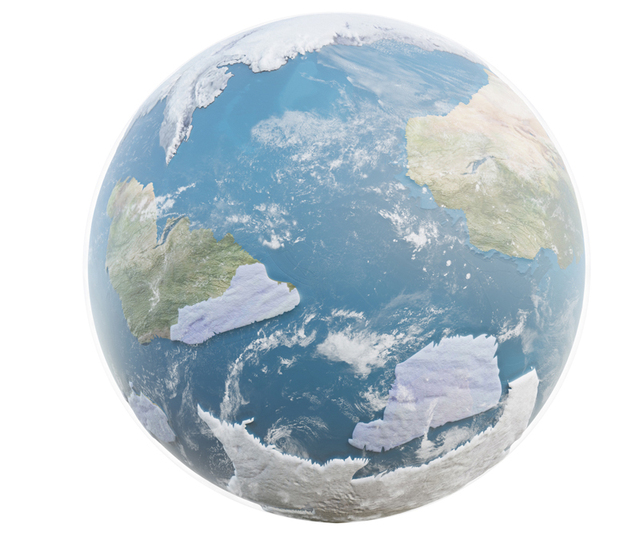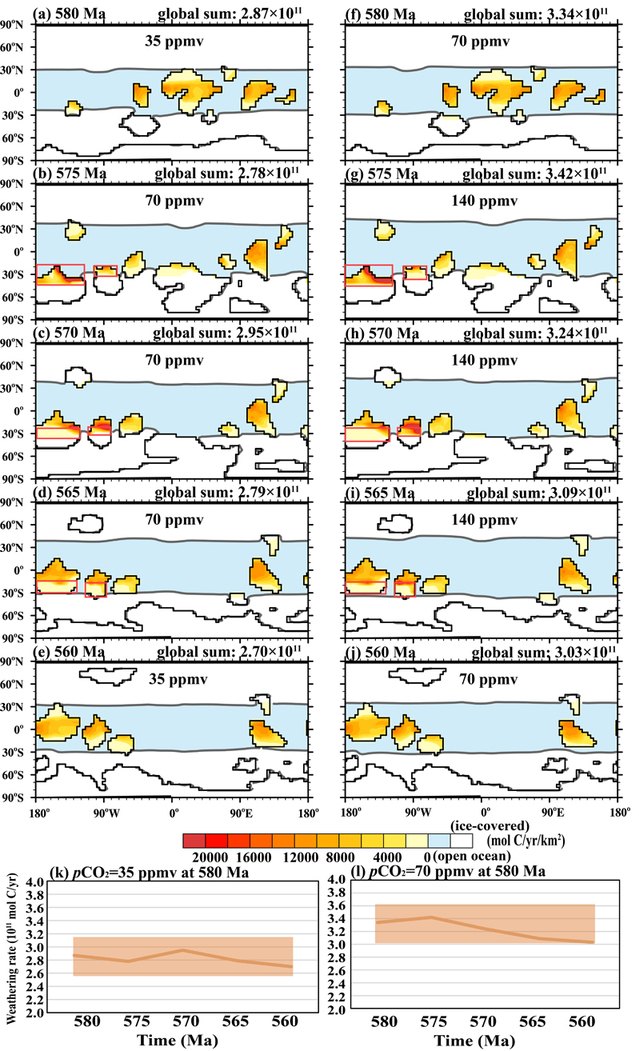Recently, OUC’s research paper titled Maintenance of the Great Late Ediacaran Ice Age has been published in Nature Communications. This study utilized numerical simulations based on climate and weathering models to reveal the significant role of Earth system True Polar Wander (TPW) activity in sustaining the Great Late Ediacaran Ice Age. The first author of this work is Associate Professor Liu Peng, from the team led by Professor Li Sanzhong at the Key Laboratory of Submarine Geosciences and Prospecting Techniques, Ministry of Education.
Previous studies indicated that during the Late Ediacaran, the occurrence of solid Earth True Polar Wander (TPW) may have coincided with a great ice age lasting up to 20 million years (approximately 580 Ma - 560 Ma), with the ice line extending to latitudes of approximately 30-40° North and South (Figure 1) (Wang et al., 2023). Concurrently, the rapid changes in global land positions triggered by TPW events could have significantly impacted both surface albedo and weathering rates. However, the specific role of these changes in maintaining the Late Ediacaran Great Ice Age remained unclear.
This study conducted coupled simulation research using climate and weathering models. First, the climate model (CESM1.2) was employed to estimate the CO2 concentrations consistent with glacial observations under the land-sea distributions of different Late Ediacaran periods (Figure 2). The simulation experiments indicated that atmospheric CO2 concentration during 575-565 Ma was likely below 280 ppmv, and during 580 and 560 Ma likely below 140 ppmv, but in all cases the concentration should have remained above 35 ppmv; otherwise, a Snowball Earth state might have occurred. Assuming that CO2 input from volcanic eruptions remained relatively constant during the Late Ediacaran and that the carbon cycle was in equilibrium at 580 Ma, then after 580 Ma, True Polar Wander (TPW) events led to a decrease in land area in low-latitude regions (particularly between 575-560 Ma). Model simulations suggested that if only the effects of changes in land-sea distribution on climate and terrestrial weathering flux were considered, atmospheric CO2 concentrations during 575-570 Ma could have risen to 560 ppmv. This level would be insufficient to maintain the continuous Great Ice Age of the Late Ediacaran, contradicting geological observations.
However, during the Late Ediacaran Great Ice Age, True Polar Wander (TPW) could move landmasses covered by ice sheets from mid-to-high latitudes to ice-free low-latitude regions. Previous studies, based on paleosol data, indicated that these exposed fresh parent rocks, having undergone glacial scouring, possessed higher weathering reactivity. This study, utilizing climate and weathering models, demonstrates that this mechanism could significantly enhance terrestrial weathering flux, enabling atmospheric CO2 concentrations to be maintained at low levels during approximately 580-560 Ma (Figure 2). Consequently, this enabled the Late Ediacaran Great Ice Age to be sustained, consistent with geological observations.

